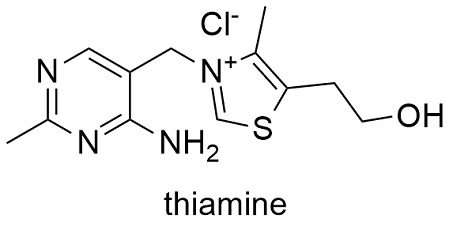Vitamin B1 thiamin
Thiamin is a micronutrient commonly known as vitamin B1. It is a water soluble Vitamin which cannot be produced in the body. Thiamin is crucial for healthy cell growth and function. Our liver can store very little thiamine, therefore, thiamin-rich meals must be eaten every day. A thiamin deficit in the body can result in a variety of issues.

Thiamine is a single chemical molecule, as opposed to folate and vitamin B6, which can be found in a number of vitamer-related chemical forms. Thiamine hydrochloride is the common name for this organosulfur compound. It exists as a white powder that is colourless when dissolved. It is soluble in water, methanol, and glycerol but nearly insoluble in less polar organic solvents. It degrades when exposed to heat. The most physiologically well-understood form of thiamine is thiamine pyrophosphate (TPP), sometimes known as thiamine diphosphate. TPP serves as a coenzyme in the metabolism of carbohydrates and amino acids.
Despite the fact that thiamin deficiency symptoms were first documented in ancient Chinese medical writings, they were not related to food until the late nineteenth century. It is a naturally occurring chemical that is also manufactured in large quantities for use as a supplement or medication. Among the foods that contain thiamine are whole grains, beans, some meats, and fish. Cereals and flours are frequently fortified with thiamine since grain milling removes a significant amount of the vitamin’s concentration. There are supplements and medications available to treat and prevent thiamine deficiency and the diseases it causes, such as beriberi and Wernicke encephalopathy. Two further usage are Leigh syndrome and maple syrup urine disease. Although they are frequently consumed orally, they can also be given
Thiamine deficiency generally manifests as fatigue, weight loss, irritability, and confusion. The well-known diseases caused by thiamine deficiency include Beriberi, Wernicke-Korsakoff syndrome, optic neuropathy, Leigh’s illness, African seasonal ataxia (sometimes called Nigerian seasonal ataxia), and central pontine myelinolysis.
Reference:
“Thiamin Fact Sheets for Health Professionals”. Office of Dietary Supplements. 11 February 2016. Archived from the original on 30 December 2016. Retrieved 30 December 2016.
“Thiamine: MedlinePlus Drug Information”. medlineplus.gov. Retrieved 30 April 2018.
“Thiamin”. Micronutrient Information Center, Linus Pauling Institute, Oregon State University. 2013. Retrieved 2
February 2022.









Leave a Reply
Want to join the discussion?Feel free to contribute!